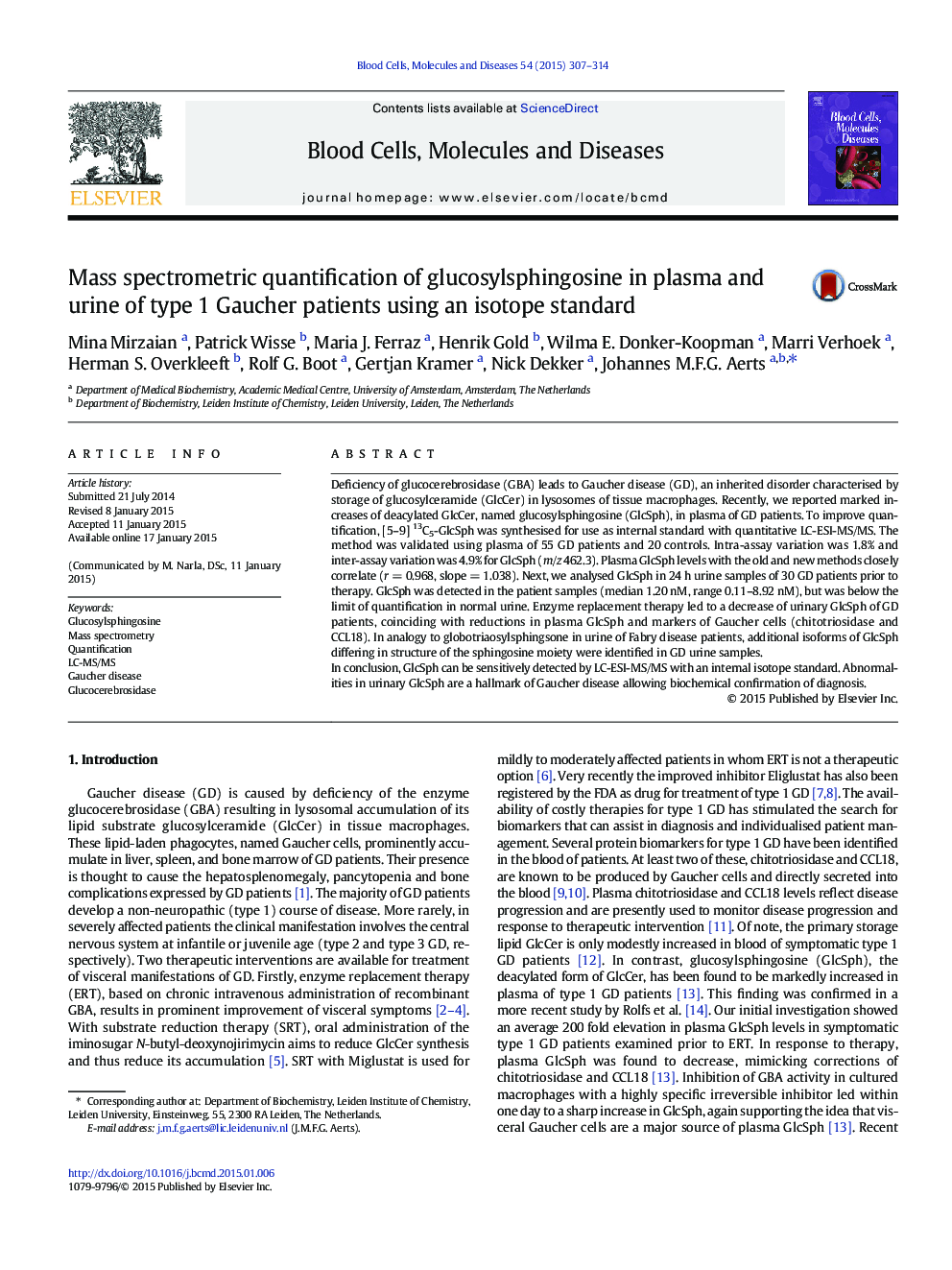| Article ID | Journal | Published Year | Pages | File Type |
|---|---|---|---|---|
| 2827116 | Blood Cells, Molecules, and Diseases | 2015 | 8 Pages |
Deficiency of glucocerebrosidase (GBA) leads to Gaucher disease (GD), an inherited disorder characterised by storage of glucosylceramide (GlcCer) in lysosomes of tissue macrophages. Recently, we reported marked increases of deacylated GlcCer, named glucosylsphingosine (GlcSph), in plasma of GD patients. To improve quantification, [5–9] 13C5-GlcSph was synthesised for use as internal standard with quantitative LC-ESI-MS/MS. The method was validated using plasma of 55 GD patients and 20 controls. Intra-assay variation was 1.8% and inter-assay variation was 4.9% for GlcSph (m/z 462.3). Plasma GlcSph levels with the old and new methods closely correlate (r = 0.968, slope = 1.038). Next, we analysed GlcSph in 24 h urine samples of 30 GD patients prior to therapy. GlcSph was detected in the patient samples (median 1.20 nM, range 0.11–8.92 nM), but was below the limit of quantification in normal urine. Enzyme replacement therapy led to a decrease of urinary GlcSph of GD patients, coinciding with reductions in plasma GlcSph and markers of Gaucher cells (chitotriosidase and CCL18). In analogy to globotriaosylsphingsone in urine of Fabry disease patients, additional isoforms of GlcSph differing in structure of the sphingosine moiety were identified in GD urine samples.In conclusion, GlcSph can be sensitively detected by LC-ESI-MS/MS with an internal isotope standard. Abnormalities in urinary GlcSph are a hallmark of Gaucher disease allowing biochemical confirmation of diagnosis.
